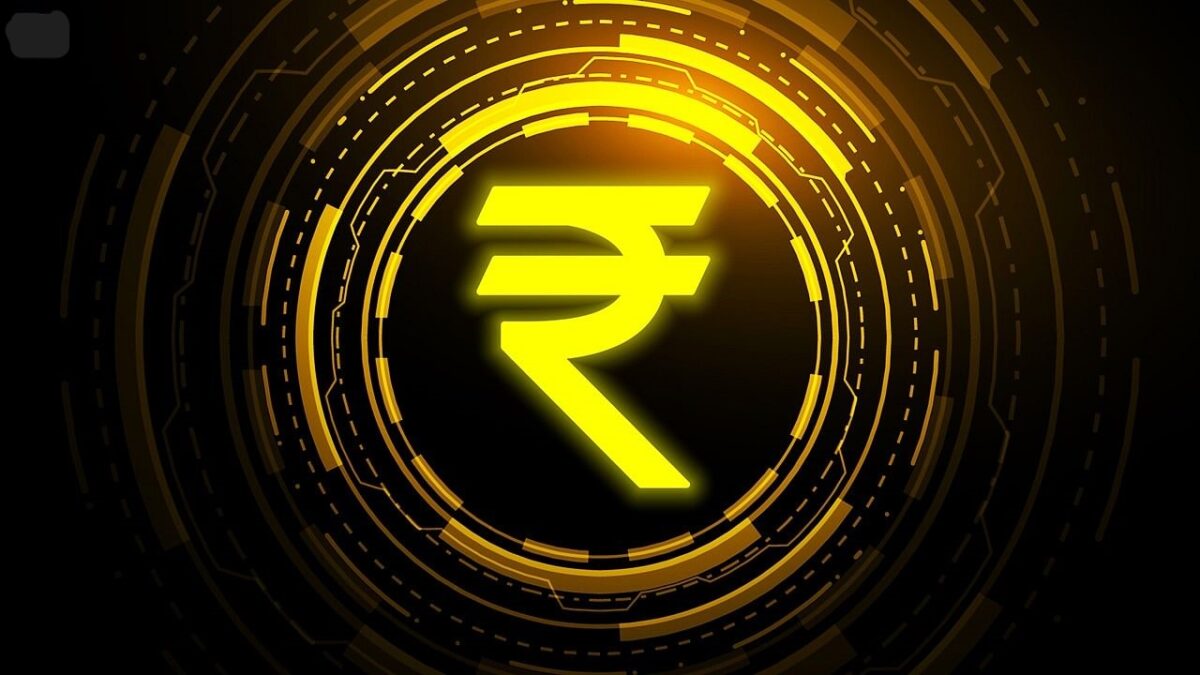The Indian government has declared in its Budget 2022-23 that its central bank will issue a digital currency as early as 2022-23. Most big economies are unwilling to make this critical decision in a hurry.
The proponents of the digital rupee argue that having an electronic version of India’s legal currency will help the country’s digital economy grow. However, it’s also vital to consider the implications of a rushed move to a central bank digital currency (CBDC).
Table of Contents
ToggleWhat is a Digital Rupee, and how does it work?


- The Reserve Bank of India (RBI) will create a digital currency dubbed Digital Rupee in the coming fiscal year.
- A central bank digital currency (CBDC) is a virtual version of a nation’s fiat money that is represented by an electronic record or digital token (or region).
- Users will be able to transfer purchasing power from bank accounts to smartphone wallets in the form of online tokens, which, like currency, will be a Reserve Bank of India liability.
- A digital rupee will function similarly to banknotes, but without the need for ATMs.
What are the Pros of a Digital Currency?


- CBDC strives to combine the best of both worlds: the ease and security of digital forms like cryptocurrencies, as well as the traditional banking system’s regulated, reserve-backed money circulation.
- The digital currency would help Indian depositors avoid losing money while interacting with conventional banks.
- Consumers may perceive an e-rupee to be a safer alternative to bank accounts, which support 76 trillion in annual real-time payments via applications such as PhonePe, Google Pay, and Paytm.
- As more purchases are made online, the faith in demand deposits, which may be converted to cash at face value, may become a theoretical construct.
- An e-currency might help to maintain the concept of convertibility grounded in everyday life.
- It has the potential to do away with the requirement for a costly network of correspondent banks to settle cross-border payments.
- Sending money home to India from Indians working abroad would become easier and cheaper, resulting in significant savings for India, the world’s largest recipient of remittances.
What are the Counter-Arguments to Digital Currency?


- Weaker banks may struggle to keep low-cost deposits if e-cash becomes popular and the RBI sets no restriction on the amount that may be saved in mobile wallets.
- Despite the fact that these small banks are losing their buffer, lenders may be hesitant to sell their loan assets and lose money. Because of their less liquid balance sheets, they may be prone to bank runs.
- All economies are concerned about the danger to financial stability, and advanced economies are concerned about the decline in the usage of banknotes, particularly after Covid.
- Unlike fully anonymous currency, most CBDCs will be constructed in such a way that central banks can track expenditure.
- Transactions made with them, however, may not be accessible to payment apps, and fintech businesses may lose access to the data used to provide low-cost loans to people without collateral.
What are the Positions of Other Countries on Digital Currency?
- CBDCs have already been implemented in various nations in some form or another. The Bahamas’ central bank launched a digital currency in 2020.
- A growing number of central banks throughout the globe are investigating the viability, use, and value of digital currencies.
- The only significant economy that is experimenting with a CBDC on a national basis is China, which felt compelled to do so due to the lack of competition from two large players in digital payments.
- In Sweden, banknotes make about 1% of the total money supply. The Riksbank (Swedish Central Bank) is, however, not in a hurry to accept a CBDC.
- The Swedish monetary authority has yet to make a definitive judgement on whether or not to issue an e-krona after five years of deliberation.
- The US Federal Reserve is seeking public input on whether an official currency should be issued to compete with private stablecoins that rely on the dollar as the world’s most popular unit of account.
- A digital euro is under examination for the next 24 months. If all goes according to plan, the European Central Bank may be able to supply it by 2025.
- Japan may postpone the launch of its digital money until 2026.
Why is there such a rush for the Digital Rupee?
- India’s hastened deadline appears to be in response to cryptocurrencies, however it’s difficult to see how an e-rupee will deter people from the former’s ‘get-rich-quick’ appeal.
- Another motivation for haste might be a desire to avoid China, which is preparing to introduce its own e-CNY (Chinese Yuan Renminbi).
- China plans to establish a cross-border trade and financial alternative to the dollar.
What is the best course of action?


- A Well-Evaluated Implementation: With the use of paper currency dwindling, there is a pressing need to promote electronic currency systems. In countries where actual cash is widely used, such as India, this becomes more efficient.
- However, it is critical to implement such a critical choice in a well-planned and well-evaluated manner, since a rushed execution may result in more losses than profits.
- KYC Requirements: A digital rupee might be a blessing in disguise. For one thing, it may not be a terrible idea for the monetary authority to employ technology to inform bank executives that they must no longer take depositors for granted.
- To prevent the currency from being used for terror funding or money laundering, stringent compliance with Know Your Customer (KYC) regulations is required.
- RBI’s role: RBI must complete its homework. The blockchain technology, or whatever system is utilised to administer the digital currency, will have to strike a balance between the often-at odds aims of speed, scalability, auditability, security, and privacy.
- Given India’s still significant digital divide, a protocol for offline use must be developed. Rushing the implementation of what should ideally be a multi-year project might lead to unintended consequences.
Somdutt Pandey
A geek who has keen interest in cooking delicious news and stuff related to latest tech explorations and gadgets reviews.

